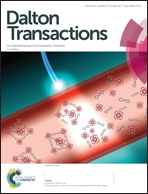New insights into the photocatalytic activity of 3-D core–shell P25@silica nanocomposites: impact of mesoporous coating†
Abstract
In this report, a three-dimensional (3-D) network of core–shell TiO2 (P25)–mesoporous SiO2 (P25@mSiO2) nanocomposites was prepared via a controllable surfactant-assisted sol–gel method. The nanocomposites were investigated for photocatalytic reactions of organic dye degradation, water splitting, and CO2 reduction to understand the roles of the mSiO2 shell in these photocatalytic reactions. It was found that the mSiO2 shell accelerates the photodegradation of the organic dye, but dramatically reduces the photocatalytic activity of P25 in water splitting and CO2 reduction. The roles played by the mSiO2 shell in the photocatalytic reactions are summarized as: (1) effective prevention of agglomeration of P25 nanoparticles, (2) facilitating the transfer of uncharged photo-generated ˙OH radicals via the abundant –OH groups on the mesoporous surface, (3) provision of increased reaction sites between ˙OH radicals and dye molecules by its mesoporous nanostructure and large surface area, and (4) prevention of diffusion of the photo-generated charge carriers (photoelectrons and photoholes) because of its insulating nature.



 Please wait while we load your content...
Please wait while we load your content...